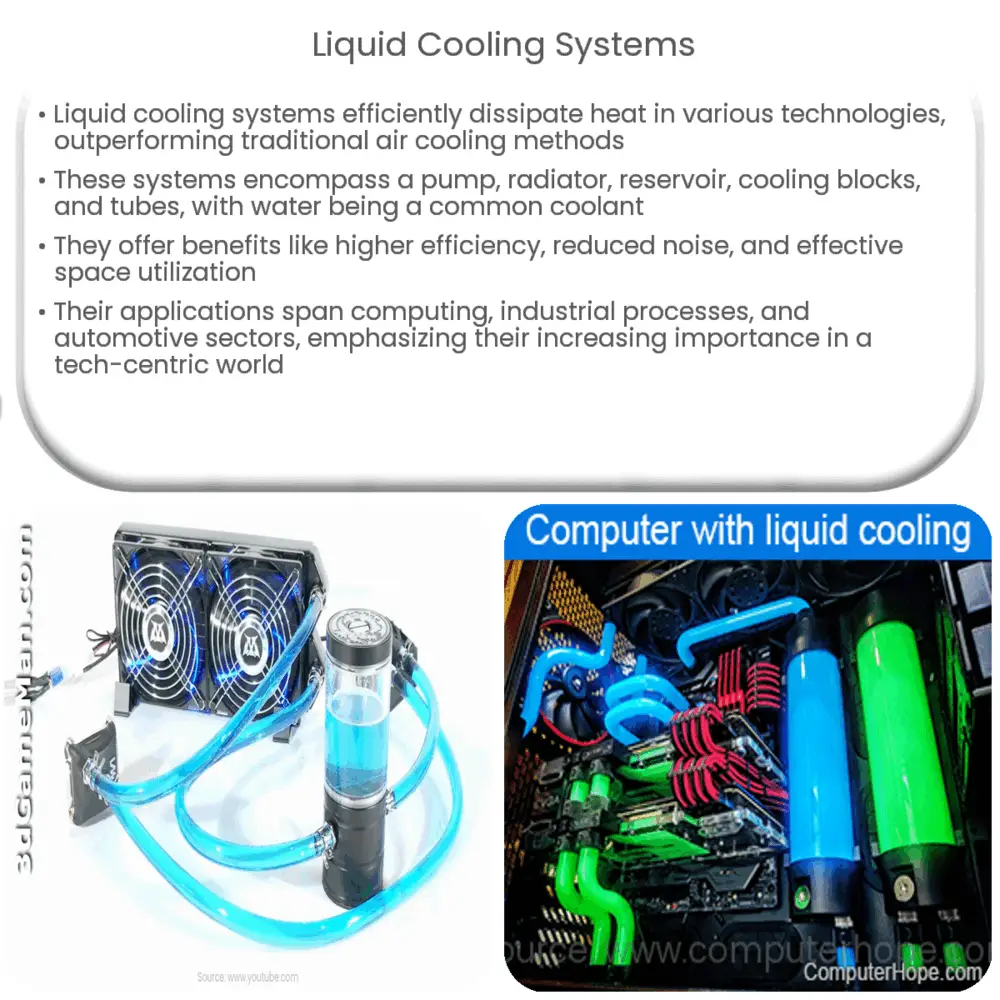Dive into the world of liquid cooling systems, their mechanisms, benefits, types, and applications in high-performance scenarios.

Liquid Cooling Systems: An Efficient Solution for Heat Dissipation
Liquid cooling systems are integral components of various technologies that generate substantial heat, especially in computing, industrial processes, and automotive engineering. These cooling systems utilize the superior heat transfer capabilities of liquid coolants to dissipate heat more efficiently compared to air cooling methods.
Understanding the Basics
Traditional air cooling methods, although popular due to their simplicity and cost-effectiveness, often face limitations in high-performance scenarios. These systems rely on fans and heatsinks to dissipate heat generated by components. As performance demands increase, these solutions might not be enough to maintain optimal operating temperatures. Enter liquid cooling systems.
The Mechanism of Liquid Cooling Systems
Liquid cooling systems, also known as water cooling systems, primarily consist of a pump, a radiator, a reservoir, cooling blocks, and a series of tubes connecting these components. They function based on the principles of thermodynamics and fluid mechanics. The primary coolant in these systems is often a water-based mixture due to water’s excellent thermal conductivity and heat capacity. However, the term ‘water cooling’ can be slightly misleading as other fluids are also utilized in various applications.
- Pump: The pump circulates the coolant throughout the system.
- Radiator: The radiator acts as a heat exchanger, dissipating the heat absorbed by the coolant to the ambient air.
- Reservoir: The reservoir holds the excess coolant, assisting in the cooling process and ensuring a continuous coolant supply to the pump.
- Cooling blocks: Cooling blocks, or ‘water blocks’, are attached directly to the heat-generating components. They absorb heat from these components and transfer it to the coolant.
- Tubes: The tubes, often made of flexible materials, connect the system’s components, allowing the coolant to circulate.
Understanding the interaction of these components in a liquid cooling system is key to appreciating their effectiveness in heat dissipation. In the following sections, we will delve deeper into the benefits, types, and applications of liquid cooling systems.
Benefits of Liquid Cooling Systems
Compared to traditional air cooling, liquid cooling systems offer multiple advantages:
- Efficiency: Due to the superior thermal properties of liquids, liquid cooling systems can dissipate more heat per unit volume, making them more efficient, especially in high-performance scenarios.
- Noise reduction: Since liquid cooling systems rely less on fans for heat dissipation, they tend to operate more quietly, making them ideal for noise-sensitive environments.
- Space utilization: In many cases, liquid cooling systems can be designed to use space more effectively, especially in tightly-packed environments like data centers or small form-factor PCs.
Types of Liquid Cooling Systems
Two primary types of liquid cooling systems are commonly used: closed-loop (or AIO) and open-loop systems.
- Closed-loop systems: These systems are self-contained, require minimal maintenance, and are ready to install. However, they offer less customization and might not match the performance of a well-tuned open-loop system.
- Open-loop systems: Open-loop systems are customizable and can offer superior performance. However, they require careful assembly and regular maintenance to prevent leaks or blockages.
Applications of Liquid Cooling Systems
Liquid cooling systems are widely used in various sectors:
- Computing: In high-performance computing (HPC) and gaming PCs, where heat generation is significant, liquid cooling systems can maintain optimal operating temperatures, thereby increasing performance and longevity.
- Industrial processes: Many industrial processes generate high amounts of heat. Liquid cooling systems can efficiently dissipate this heat, preventing equipment damage and ensuring stable operation.
- Automotive: In electric vehicles, maintaining battery temperature is crucial. Liquid cooling systems help regulate these temperatures, improving battery efficiency and lifespan.
Conclusion
In summary, liquid cooling systems, with their efficient heat dissipation and noise reduction capabilities, have become an essential tool in various high-performance scenarios. As technology continues to advance, the importance of effective cooling solutions will only increase. By understanding their mechanism, benefits, types, and applications, one can better appreciate the significance of liquid cooling systems in our increasingly tech-driven world.

